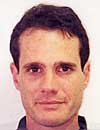Nadal's Extraordinary
Comeback
Matt Cronin

Tennis has always had amazing of comeback stories. There were Andre Agassi and Jennifer Capriati's returns from burnout and personal hell to Grand Slam glory. There was Thomas Muster winning Roland Garros after his leg was crushed by a drunk driver. There was Monica Seles returning after being stabbed and raising the trophy at the 1996 Australian Open.
But Rafael Nadal's recent comeback after seven months off due to knee trouble has been nothing short of extraordinary. Unlike some of the other great champions mentioned above, he did not have to play tournament after tournament to regain his form and confidence.
Nadal's comeback proves three things. First that that the 11-time Grand Slam champion is clearly one of the best players ever. Second that the ATP Tour continues to lack depth. Third, that as of Indian Wells, he is still in Roger Federer's head.

Nadal wasn't his fast moving, nearly error less dominant self during the first week of his comeback at Vina Del Mar in Chile in early February. But he still reached the final, even though it looked like he had little faith in his left knee holding up and was very hesitant moving side to side. In the final, a veteran lefthander without an impressive resume, Horacio Zeballos. zoned and hit right through him in the final set.
But, despite the loss, Nadal was pleased that he survived the week and had begun to rediscover his feel. He had barely practiced before the tournament, but as he later said, he had not forgotten how to strike the ball. It was his decision-making and how his body would respond that were in question.
The answer was that from then on he did not lose a match in three consecutive events. He destroyed David Nalbandian in the final of Sao Paolo on a very fast quick indoor clay court.

He took the next week off and then went to Acapulco to compete against a better field. Two huge tests awaited there in the semifinals and finals against his top-10 Spanish compatriots in Nicolas Almagro and David Ferrer.
He exposed Almagro's lack of faith in his shot making against elite players once again, and then tore apart Ferrer in the final in what he called two of his best sets on clay ever. He ripped the ball from everywhere and the gritty and fast moving Ferrer was unable to withstand the onslaught. Nadal buried him.

Then it was on to Indian Wells, a Masters 1000 tournament he wasn't even sure he was going to be able to play, his first event on hard court in nearly one year, the surface he blames for giving him constant knee trouble.
Nadal openly railed against the courts during the event, saying that he had every right to do so, because he had more than proved himself at Indian Wells in the past (Nadal holds major hard-court titles at Australian and US Open, the Beijing Olympics, Indian Wells and Canada).
But the bottom line was he decided to play. He missed the super elite competition. But the deeper reason was probably that he could not dismiss the surface altogether without diminishing his stature in the locker room.
On the ATP Tour, if a player wants to be held in high esteem - and Nadal is perhaps held in higher esteem than any other player when it comes to gutsy efforts- he simply cannot duck numerous big events.

So Nadal decided he would skip Miami but not Indian Wells, where he had had so much success in the past and where the gritty hard courts are fairly slow. No. 1 Novak Djokovic was in the draw, as were his two other primary rivals, Roger Federer and Andy Murray.
There were some who dismissed his success on clay in Latin America, saying it didn't show much other than that the so-called greatest clay court player of all time was comfortable on his favorite surface and that he beat a slew of guys he was either far better than, or whom he psychologically owned.
Nadal has owned the entire tour on clay since 2005, including the rest of the Big 4, but that has never really been the case against Djokovic on faster courts and that was clear when the tireless Serbian took him out in the finals of the Wimbledon and the US Open in 2011, and in the final of 2012 Australian Open.
That also has not completely been the case against Andy Murray on hard courts, but Nadal is 7-0 against the world No. 3 on grass and clay and still had a 6-5 edge against him on hard.

And the great Federer? I will get to that question shortly.
Early on Nadal was hesitant against the young American Ryan Harrison, but was still too consistent for the struggling young American. He then received a walkover against Leonardo Mayer, but trouble awaited in the form of the big hitting Latvian, Ernests Gulbis, who had just won a title in Delray Beach and who had come through the Indian Wells qualifying.
The outspoken Gulbis promised that he would crush balls to the corners and see whether Nadal could run them down. The Spaniard did, and sent them back with interest. Suddenly he no longer seemed to be hesitating running way out wide.
Nadal would face Federer in the quarterfinals, the defending champion who had beaten him the last time they two played, which happened to be in the 2012 Indian Wells semis. But Nadal wasn't physically right in that contest. Now Federer it was Federer with a back problem coming into their 2013 matchup.

Federer had come off three tough losses to begin his season: a trying five-setter to Murray in the Aussie Open semis; a shocker at the hands of Julien Benneteau in Rotterdam; and then a bit of stunner when he failed to convert three match points against Tomas Berdych in the Dubai semis.
But regardless of any injury, Federer clearly doesn't have the confidence against the Spaniard than he does against other players. This is partly due to the well known fact that Nadal's heavy forehand and twisting serve into his one-handed backhand makes for a bad match up. But it is also partly because he hasn't beaten Rafa at a major since 2007 Wimbledon. At this point there isn't any doubt that Nadal's 19-10 record against him has gotten into his head.
So after a decent first set that he lost, Federer virtually rolled over in the second set, in a move that Nadal felt was "strange." Roger tried hitting backhands down the line to Rafa's backhand, a tactic that has worked at times, but a clear shift from his usual all out assault on the open court.

It didn't work. Rafa seemed to absorb whatever Roger threw at him, moving beautifully, and dominating the greatest aggressive baseliner of the modern and possibly any era, mostly with ease.
Also interesting was Federer's lack of disappointment or even concern in his press conference afterward. He seemed happy and relaxed, almost as if he had actually won.
But maybe that was because he believed his back had kept him from really going all out for win. In the press room, the consensus was Roger was at somewhere between 60 and 80 percent in the match.
For Nadal however his prospects for the title were now bullish. He pulled Berdych around the court and bested him for the 12th straight time. But instead of another match-up against Djokovic in the final, it was the Argentine Juan Martin Del Potro, who first upset Murray in the quarters, and then made a stirring comeback to defeat Djokovic in the semis.
Del Potro had beaten Nadal before, in fact trounced him in the 2009 US Open semis. He was also playing his best brand of yellow ball since he returned from wrist surgery in 2010. But once Nadal figured out that he was opening the court up too quickly for DelPo's giant forehand and decided to play more patiently, he was able to gain control of the match, turning it into a contest of short sprints, which obviously favored Nadal over the 6-foot-6 native of Tandil.

So Nadal grabbed his third Indian Wells title in three sets, saying that it took him until the middle of the second set to figure out his was playing with the wrong tactics. It was his 600th match win and his record 22nd Masters 1000 title.
Del Potro was sort of surprised, but not totally, because as he said, "Rafa can do everything. He's very strong mentally. He has big talent, as well. It's amazing how fast he's recovered the level."
That is certainly true, but what is also true is that since Nadal won his first Roland Garros crown in 2005, beyond the top 4, it is slim pickings when it comes to true contenders. Nadal, Federer and Djokovic have combined to win 30 of the last 32 Grand Slams, with only Del Potro and Murray (2012 US Open) managing to slightly stem that tide. The Big 4 have also combined to win 34 out of the last 37 Masters 1000s, and eight of the last 10 ATP World Finals.

For all of the talk that comes from the players about how tough it is to win matches day in and day out and how the top 100 is much improved from say 15 years ago, statistics do not back that up.
In fact, from 1989 to 1998 there were six different ATP Finals winners and, in the same period out of 40 Grand Slams, there were 17 different winners.
So when Nadal takes the court on clay in Monte Carlo during the second week of April, expect this from the Spaniard: a ninth straight title. He will likely follow that up with more crowns in Barcelona, Rome, possibly Madrid, and certainly Roland Garros.
In good health on slow surfaces, he is still the most skilled, threatening and mentally tough player out there. If anyone outside of the Big 4 or Del Potro happens to beat him on clay, be very shocked, because 2013 is trending toward another year of Nadal dominance on dirt--and perhaps on the other surfaces as well.






